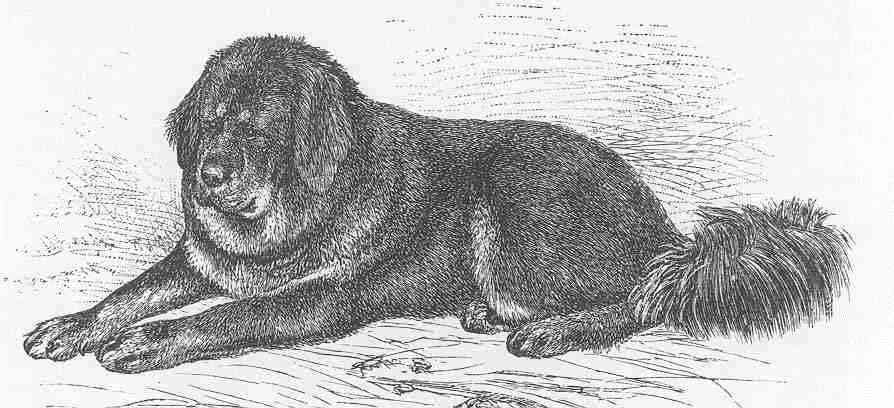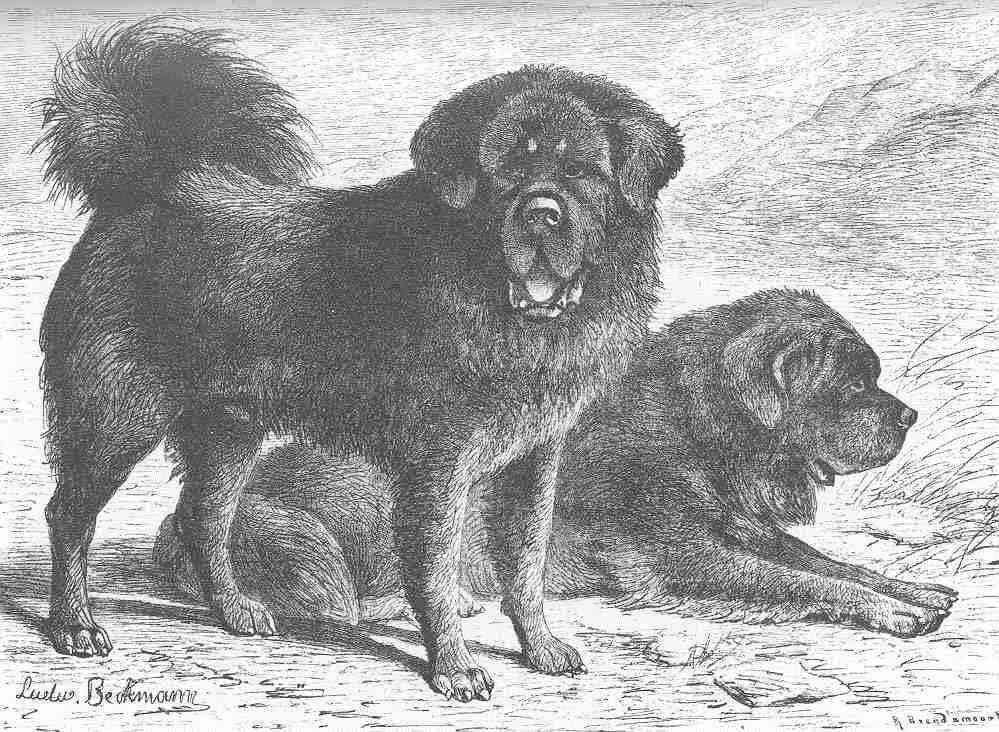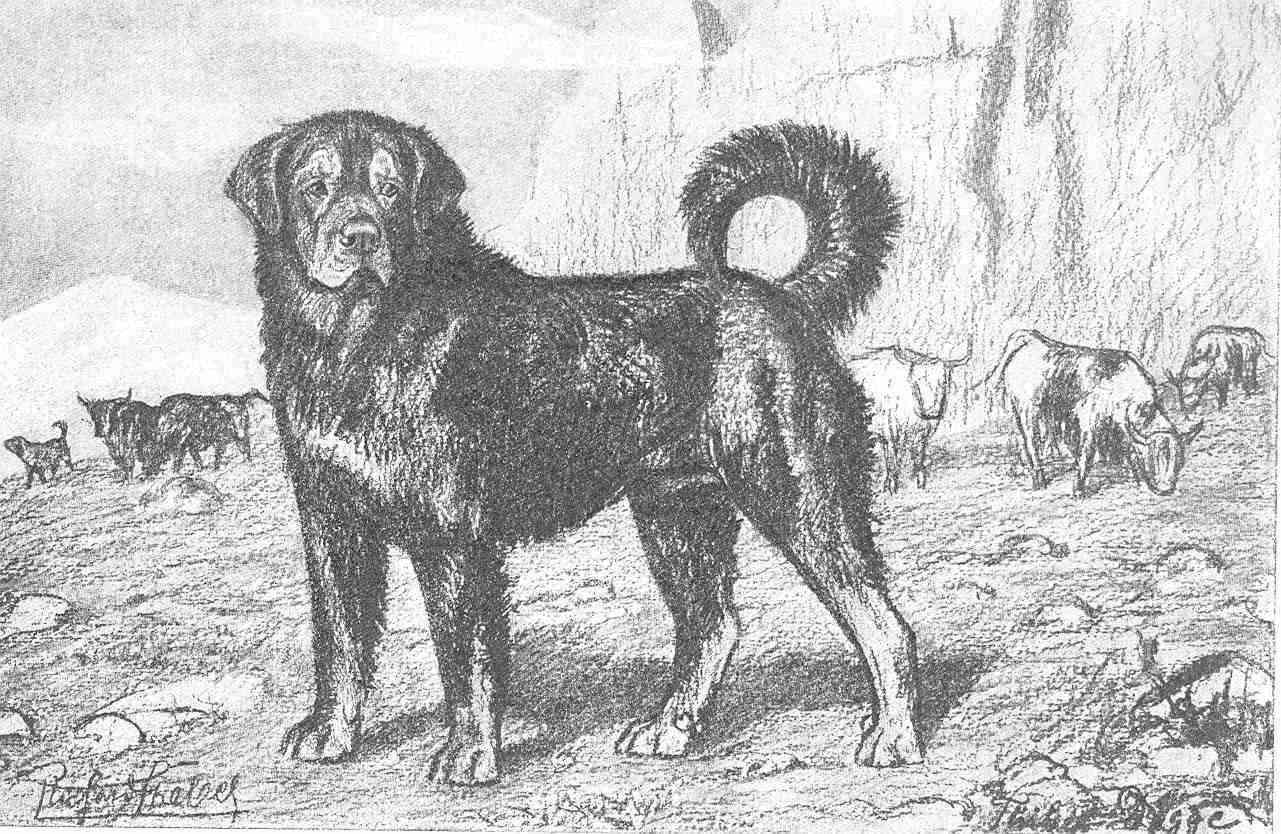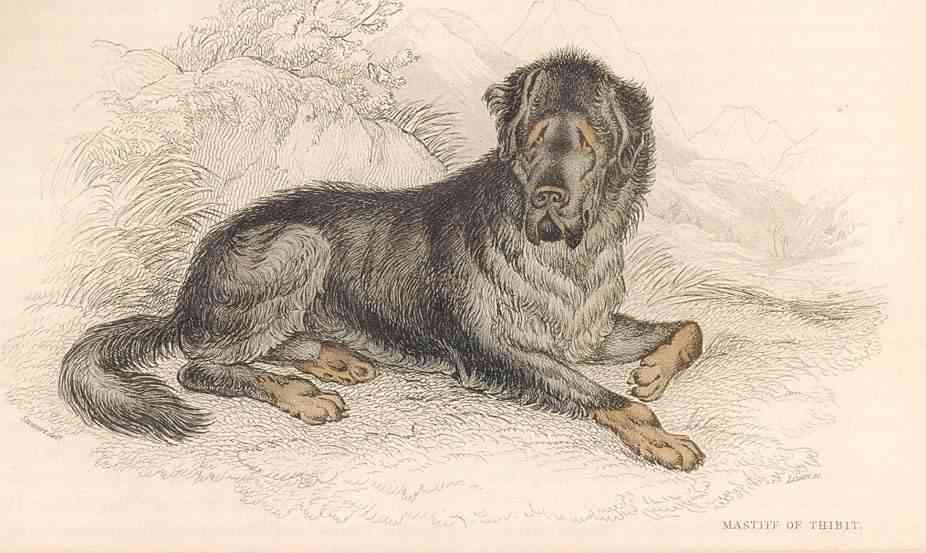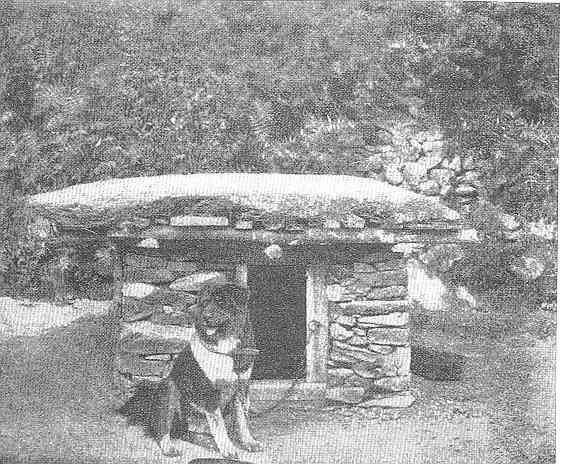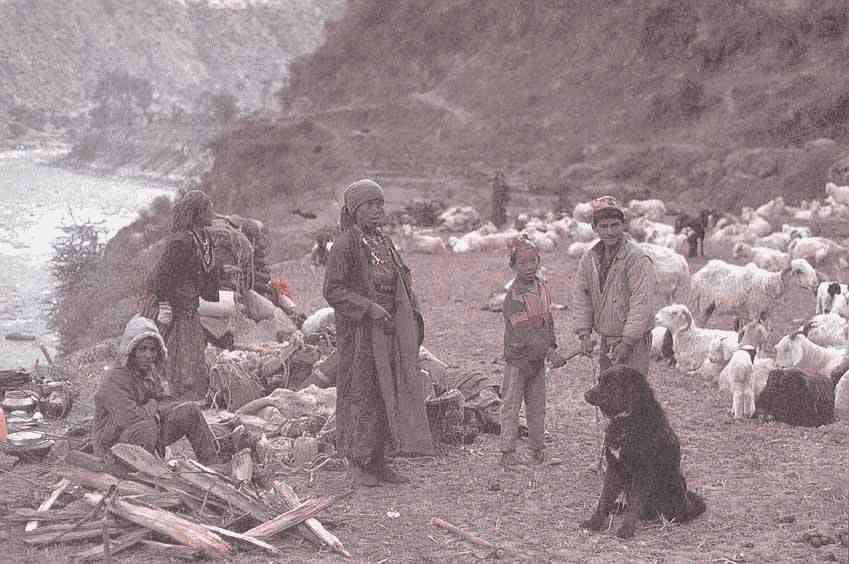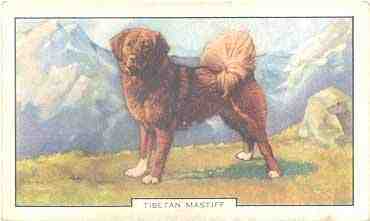 |
The mysterious Do Khyi |
| The
seclusion and also unanimity of Tibet are reliably one of the principal
reasons for all - the partial fabulous descriptions of a large Tibetan dog. After the
historical silk road also Tibet is touched it probably correctly that also
already in the antiquity on these dogs also in the European hemisphere one
reports again and again. The narrations from this time in addition, later
the descriptions by Marco Polo over these dogs prove that the travellers
nevertheless acquired a certain reverence before them. Already from such
reports it is evident that the targeted application of the dogs, i.e. for
the protection of the herd, must have not substantially changed the domestic
territory and property during this long period. Much however is safe to represent above all in order the own performance in the dangers of such a long journey correctly also painted and exaggerated passed on. |
|
|
|
Tibet Mastiff " Siring " after Dalziel, London1881 from Strebel " the German dogs " Kynos publishing house |
| The written excessive quantity of a gift to the Chinese emperor around 1121 v. Chr. describes a dog, which in this type surely today no more is not to be found in Tibet. Applies also here: the dog becomes which one from him makes. In these seclusion of Tibet under partial life-hostile conditions of nature the farmers, in addition, the pastoral tribe were threats by robbery and theft suspended and like that were desired probably always it the fact that the dogs a safe protection of have and property as well as the life ensured. |
|
Whether the DO Khyi was actually the ancestor of the just as legendary Molosser, in addition there are many theses. In addition, the possibility existed it by the trade of the antiquity, is possible that resembled human needs and ways of life the independent emergence of similar dog types promoted. Surely however the homogeneity of the behavior is to be still determined particularly with the Eurasian herd protection dogs also today. The seclusion of the Tibetan high country has us the Tibet Mastiff keeps a participation in the emergence almost unchanged or other flock-guard breeds can be quite possible. |
|
|
|
Tibethunde - owner count Szecheni aus:...Beckmann " races of the dog " Kynos publishing house |
|
In
addition, these theories are to be proven today over 100years after
"discovered” the Do Khyi by western cynologists not unique. The more
importantly it might be the Tibet Mastiff than original race in the physique
such as natures to keep as
uninfluenced as possible. Only over the turn of the century, in the course of the colonize Tibet was travelled, partly under adventurous conditions, often also secretly by Europeans and by the descriptions, as well as by first imported goods of such dogs to Europe large interest in these impressive Do Khyi was aroused. The first representatives of the race were presented under European names in Europe, from this time do result also at all the not correctly introduced names for all Tibetan dog races like the Tibet Terrier, which does not guarantee Terrier is, to the Tibet Spaniel, which does not for the hunt reliably to use , and the Tibet Mastiff or in German the Tibet Dogge which never had this function as the European Mastiffs. |
|
|
|
Tibetdogge Richard Strebel 1905 (Heliogravure) fromStrebel " the German dogs" |
|
The in
such a way defined Do Khyi is safe also around the turn of the century a
imposing, strong dog with stately heading and mastiff-like lips, regarding
the legendary size is the disappointment however with the first expert ones
largely and already with the cynologists of this time was disputed the made
allocation to the Mastiffs and Molosser. Already also an allocation of the
Do Khyi to likewise at that time also still the flock guard dogs
wide-spread in Europe quite took place around the turn of the
century 1900. The nature of these
early imported goods was often not in the focal point of the interest, The relation of the
Europeans to the dog in this time was to be supported reliably not
favourably around these animals during the integration into the human
household. And nevertheless some Europeans quite detected the peculiar attraction by an intensive linkage and confidence to the family and thus to this breed the chute in Europe enabled. |
|
|
|
oF Tibet after steward from Lizars Animated Nature,London 1832 |
|
By confusions of the First and Second World War unfortunately the tracks of these first European breed dogs lost, probably also today still another again well making loss for the genetics of this race do not have themselves. |
|
|
|
Tibetdogge, accommodation Sven Hedin from "Transhimalaya " 1907 |
|
Only end of the seventies, for a long time after the beginning of the
Holocaust at the Tibetan people, the culture and nature in Tibet by the
Chinese Annexation in the year 1950 came the first Do Khyi again by imported
goods this time from stocks of the immigrants from Nepal, Bhutan and India
to Europe. Many valuable blood lines of the race became extinct by the pursuit of these dogs by the Chinese in Tibet and irreparably lost. After the Do Khyi represents a basis of the rural, nomadic way of life of the Tibetan people is particularly these dogs pursued and killed around to prepare the soil for a new for the Chinese conceptions adapted way of life. |
|
|
Nomads,
Nepal with Do Khyi Source of picture: Adventure dog VGS publishing house |
|
Descriptions from my surrounding field according to, could be seen on
journeys in Tibet, in the exchange of the University of only recently still
many to the Do Khyi similar dogs, which were very badly treated however,
usually in the villages, a majority of these dogs might be no longer clear
in breed. Only one Do Khyi at a herd of Yaks, which was apparently a
splendid specimen. Photographing the same, likewise all other dogs was
forbidden by the Chinese travel company. In addition, still goes today from the representatives of this breed, who realize world-wide a quite peculiar attraction on humans, whom the owners of these representatives can acknowledge again and again. |
|
|
![]()
